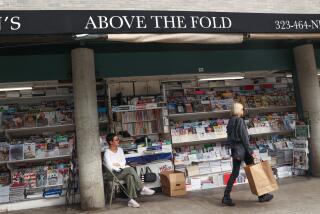End Run Around the Shield Law : Ruling in King case undermines right to know
- Share via
In ordering a Times reporter to divulge a confidential news source or possibly face a daily fine of $1,500, Superior Court Judge Bernard Kamins has turned the intent of a state law designed to shield reporters from being forced to reveal sources on its head. Worse, the fines could easily be interpreted as an attempt to discourage aggressive reporting about the Rodney King case.
The worrisome effect of levying fines on reporters would be to obstruct the news-gathering process, and in so doing deprive the public of important information about one of the most compelling local news stories in recent memory. Indeed, if this ruling were to set any kind of wider precedent, news-gathering would be considerably eviscerated.
The King beating has riveted the attention of the people of Los Angeles. The traumatizing March 3 incident, captured on videotape, continues to be prominent in national discussions about police brutality and has huge significance for the city, raising fundamental questions about police use of excessive force, civil rights and even the city’s ability to govern itself. So the public’s need to know about the King case is indisputable.
Reporter Richard Serrano wrote a story May 21 containing detailed excerpts from the 314-page report on the King case prepared by the LAPD’s Internal Affairs Division. The story provided the most complete recounting yet of the incident.
The story followed a gag order by Kamins that forbade all officials involved in this case from discussing, much less releasing to the public, either police personnel files or Internal Affairs records. Kamins said he did this to assure the four accused officers of a fair trial. But Kamins himself said at a hearing that he is “convinced we can still get a fair jury without a shadow of a doubt . . . I don’t think I can gag the newspapers.”
Of course, the First Amendment says he cannot. And a section of the California state constitution ensures that reporters cannot be held in contempt for refusing to reveal confidential sources. Yet, by imposing fines on a reporter--by doing an end run around the shield law--Kamins is just finding another way to gag a newspaper. He assumes that someone violated his gag order and released information to a reporter; the judge does not know who may have violated the order, so he punishes the reporter.
The right to both a free press and a fair trial are hardly inconsistent. The U.S. Supreme Court has affirmed that the best way to ensure a fair trial is through a free press. The videotape of the King beating has been seen on TV many, many times. Yet even so, the judge has said, and we agree, that an impartial jury can be found.
There can be no constructive purpose in punishing reporters for doing their jobs. And the potential result--chilling the dissemination of news to the public--is one that Los Angeles, and this nation, can ill afford. This dangerous and ill-conceived ruling should be reversed. This newspaper intends to take whatever legal steps are necessary to achieve that goal.
More to Read
Sign up for Essential California
The most important California stories and recommendations in your inbox every morning.
You may occasionally receive promotional content from the Los Angeles Times.










